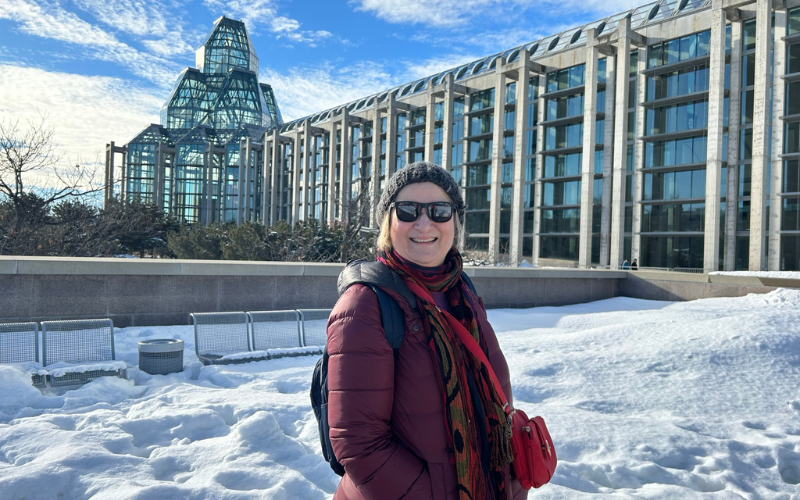National Gallery of Canada: Best Bets for the Artsy Traveler
This post may contain affiliate links to products or services I'm happy to recommend. If you click on an affiliate link and then make a purchase, Artsy Traveler may earn a small commission at no cost to you. Thank you!
Every time I visit Ottawa, I take the opportunity to check out the National Gallery. It is truly a national treasure, and one of the reasons why I was very pleased when my niece told me they were moving to Ottawa with their family a few years ago. Now I have an excuse to visit Ottawa more often, which means I can spend more time at the National Gallery!
In this post, I share my top 20 favorite pieces. These are just the tip of the iceberg, chosen from room after glorious room of masterpieces in the Canadian collection. When you go, you’ll find many more pieces to marvel at.
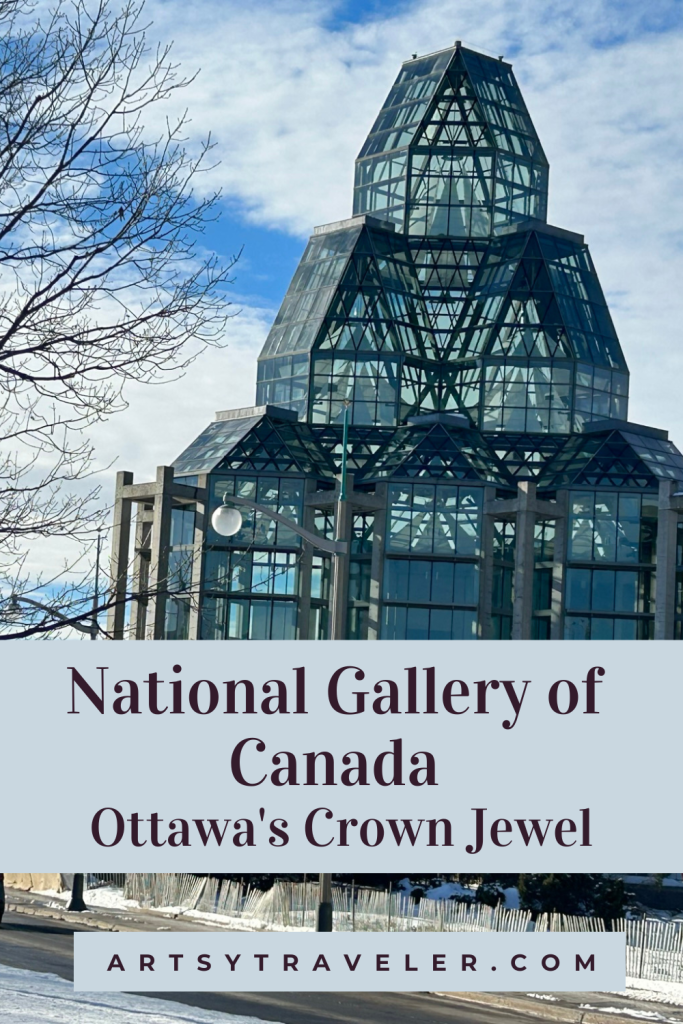
Overview
The National Gallery of Canada is an excellent museum both inside and out. Outside, the striking glass structure built in 1988 echoes the shape of the library on Parliament Hill that it overlooks. Inside is a comprehensive collection of the best of the best of Canadian painting, particularly the Group of Seven and some notable moderns.
I visited the National Gallery of Canada with my daughter on a brilliant blue-sky day in early February 2023 after checking out Winterlude, eating my very first sugar shack maple-syrup lollilop (so delicious), and strolling past Parliament Hill (rated the #1 attraction in Ottawa on Trip Advisor!)
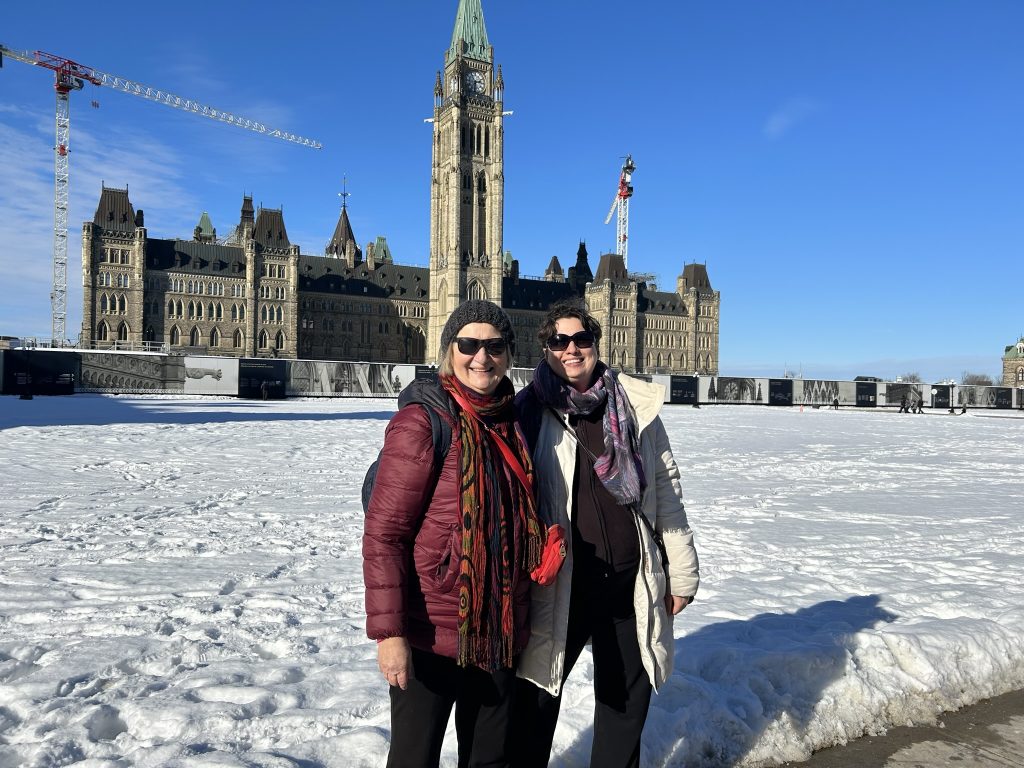
Location of the National Gallery of Canada
The National Gallery is a short walk from Parliament Hill along the Rideau Canal and from the Byward Market. The map below shows the location of the gallery along with a few landmarks such as the Parliament Buildings, the Rideau Centre, and the Ottawa Art Gallery (also worth a visit).
Meet Maman
On your way into the gallery, you can’t help noticing the massive sculpture by Louise Bourgeois. Called Maman and created in 1999, the giant egg-carrying arachnid cast in bronze was inspired by Bourgeois’s own mom. If you don’t much like spiders, you might want to walk quickly past Maman, but if you’re not too bothered, linger a while and take some striking pictures!
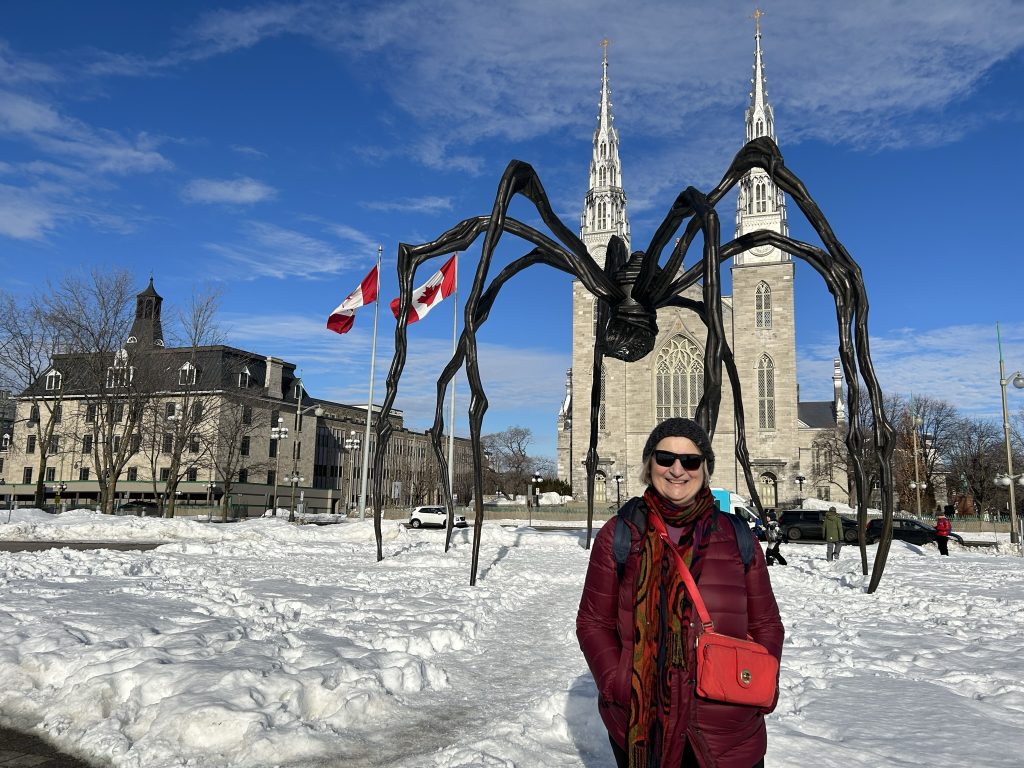
Touring the Canadian Collection
On my most recent visit to the National Gallery of Canada in February 2023, I entered the main Canadian collection from the moderns and traversed backwards to the colonial and pre-colonial eras. Usually, I start old and end new, but I found going backwards was a refreshing way to get a different perspective on the collection.
In addition to the large collection of Canadian art on the main floor, the National Gallery also includes a comprehensive collection of European and American art, and a large area devoted to contemporary work (most of which was kind of missable, to be honest).
Because I’m limiting this post to just 20 of my faves, I’m focusing only on the Canadian collection. Ready? Let’s start with the moderns.
Modern Canadian Art at the National Gallery
Modern art–as opposed to contemporary art–includes works from the mid 20th century until about the 1970s. I’ve limited myself to five faves, presented in the order in which I came across them and listed by artist name rather than the name of the work.
Norval Morrisseau (called Copper Thunderhead)
Norval Morrisseau is credited with creating a completely new art movement inspired by non-European aesthetic conventions and iconography. His work is a visual translation of an Anishnaabe worldview that is based on oral tradition, individual experience, and heritage.
I don’t think anyone could look at a painting by Morrisseau and not be enchanted. The vibrant colors and intriguing shapes, along with his original depictions of animals and people, are irresistible. His work is immediately recognizable and so compelling. This painting was the first I gravitated to when I entered the room.
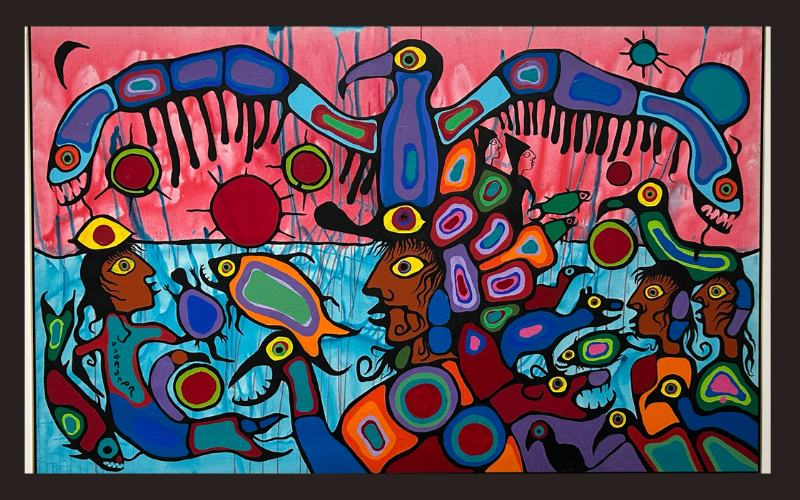
Alex Colville
Alex Colville’s hyper-realistic paintings depict everday life in the Maritimes. This piece is one of my favorites (and probably Colville’s most famous) because it beautifully captures the feel of a sunny, breezy day in summer. Also, what is the woman looking at? Prince Edward Island? Another boat? Us? It’s enigmatic and yet relatable. The painting depicts Colville in the background and his wife Rhoda in the foreground holding the binoculars.
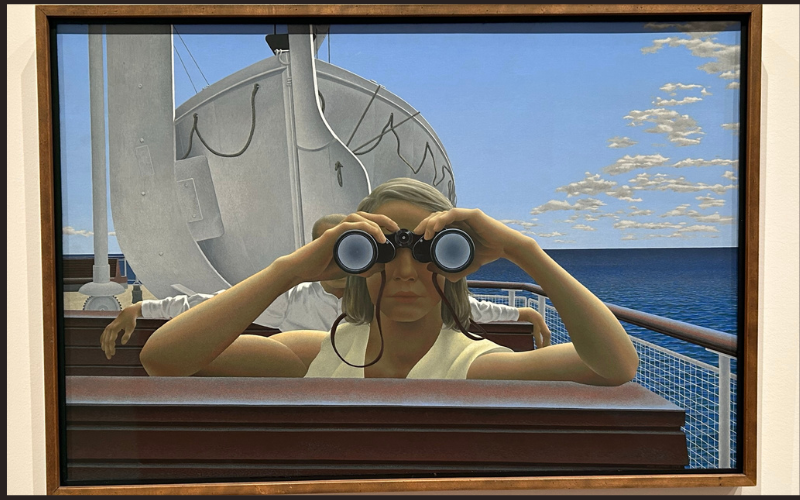
Art McKay
I was unfamiliar with Art McKay, although my husband, painter Gregg Simpson, has since told me that he met him back in the 1970s. I included his work simply because I really liked it. It reminds me of a Pollock but with more fluid movement. Apparently, McKay was inspired to pursue abstraction after meeting the American abstract painter Barnett Newman in 1959.
In this painting, the limited palette (black, white, blue) produces a compellingly energetic work that drew me in. I wanted to sit with it for a while, to feel the paint swirling around me like clouds seen from outer space.
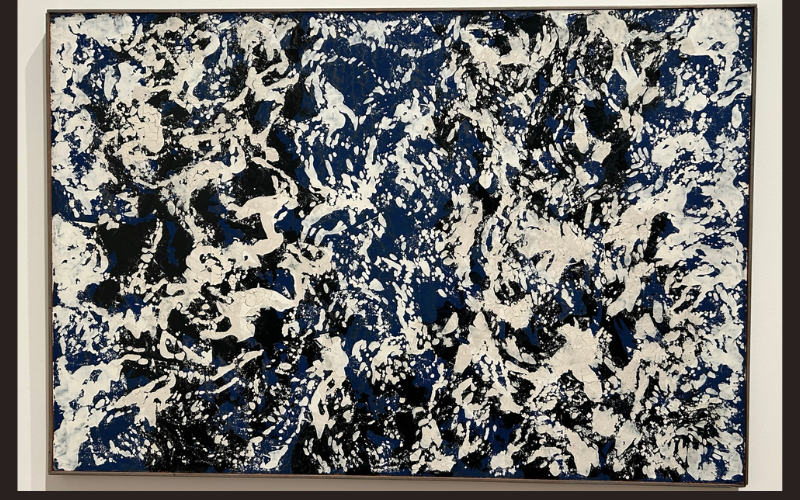
Jean Paul Riopelle
The National Gallery of Canada includes several paintings by Jean Paul Riopelle in its collection, which is good news for me because I’m a big fan of his work. This massive triptych is so fabulously joyous. Riopelle used a palette knife to apply paint directly to the surface using free and “automatic” gestures. He is known as the most ambitious artist in the Automatistes movement.
The title of the piece, “Pavane”, refers to the 16th century Spanish dance that is characterized by a stately and processional rhythm. And this painting fairly pulsates with rhythm.
I couldn’t do the piece justice with a single photograph and so took this video.
Kathleen Munn
I had never heard of Kathleen Munn (1887-1974) whom I discovered was one of the leading modernist painters in Toronto in the 1920s. I’m happy to see that the National Gallery is including more women in its collection. This appealing piece reminds me of a Franz Marc with its colorful shapes and abstracted landscape elements.
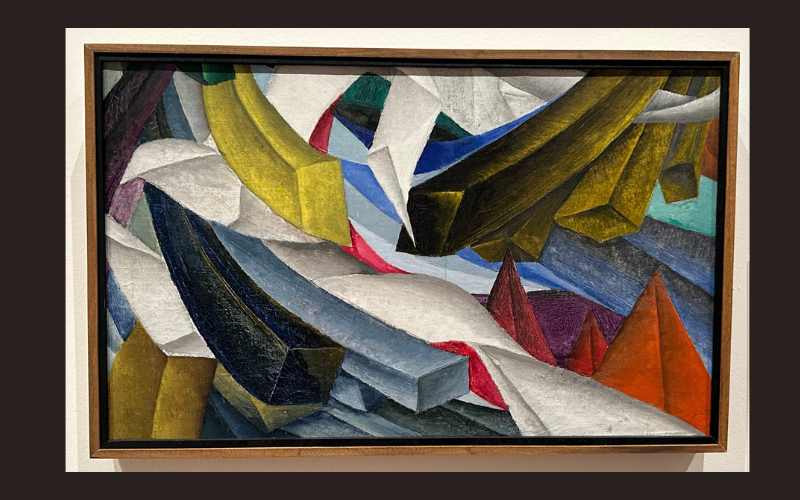
Group of Seven & Friends at the National Gallery
The Group of Seven are justifiably famous for creating paintings that showed the Canadian landscape to the world back in the early 20th century. The Group of Seven (also known as the Algonquin School) includes Frank Carmichael, Lawren Harris, A. Y. Jackson, Frank Johnston, Arthur Lismer, J. E. H. MacDonald, and Fred Varley. Other artists associated with the group are A. J. Casson, Tom Thomson, and Emily Carr.
The National Gallery devotes several rooms to showcasing the work of these artists. I’ve selected my favorites in no particular order, except that I start with my fave, Lawren Harris.
Lawren Harris
Lawren Harris is hands-down my most beloved Group of Seven artist. I particularly appreciate his later work when he moved away from landscape and toward a spiritually-inspired form of abstraction.
The painting below is an example of his later work when he was focusing on producing abstract art using geometric compositions with layered planes.
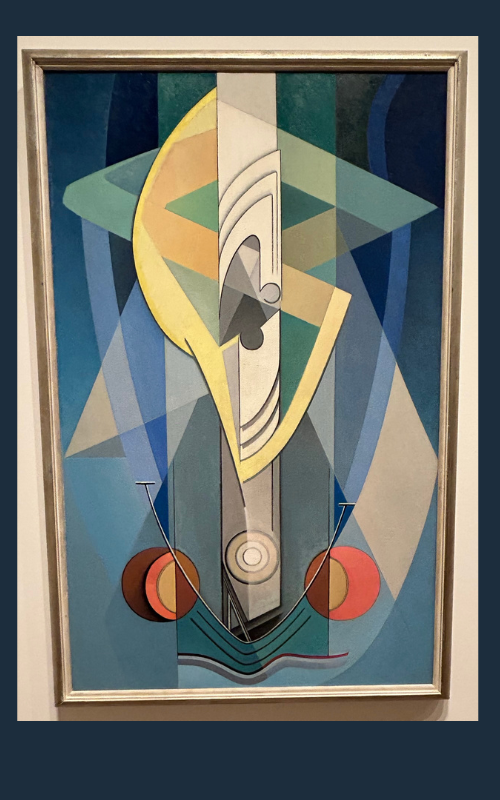
This piece is one of Harris’s most famous. It depicts the north shore of Lake Superior and was painted in 1926 when Harris traveled to the region with fellow Group of Seven artist A. Y. Jackson.
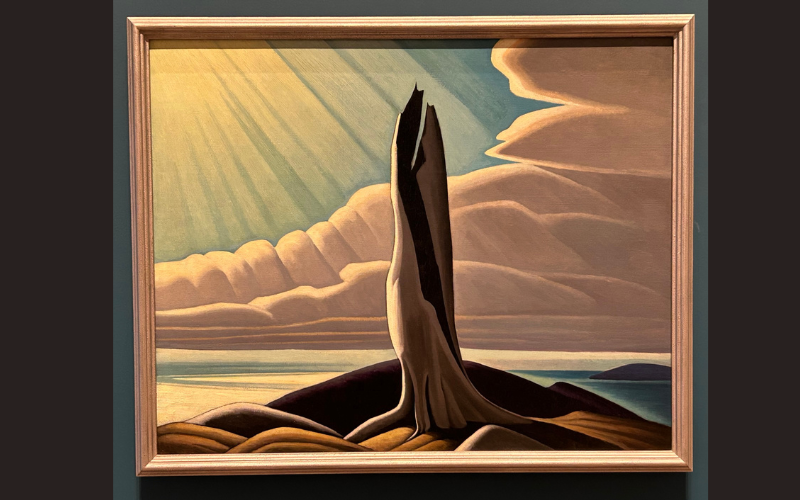
Call me a tourist (an artsy tourist), but I couldn’t resist taking a selfie in front of this most iconic of paintings.
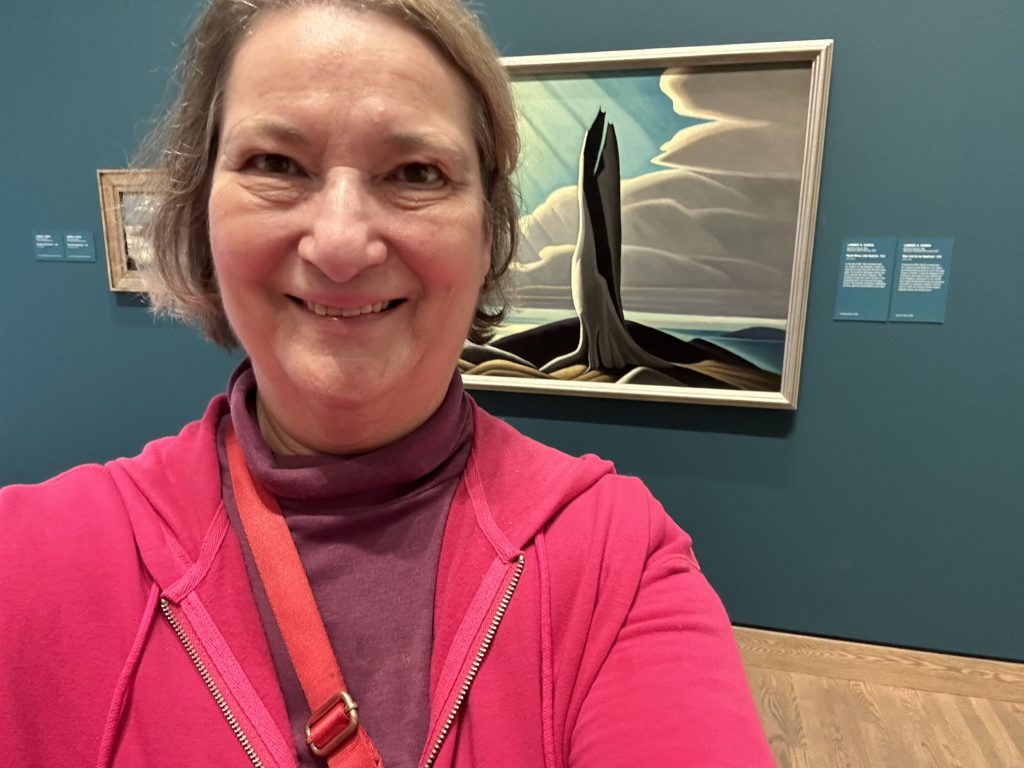
J. E. H. MacDonald
Apparently, this painting by J. E. H. MacDonald was panned by the critics when it was first exhibited in the 1920s. One critic even compared the painting to a huge tomato salad. That seems a bit harsh! I was immediately drawn to this painting because of its exuberant depiction of fecundity. Some of the plants are decaying, some are blooming, and all are jumbled together in a glorious mess of in-your-face nature. It’s awesome!
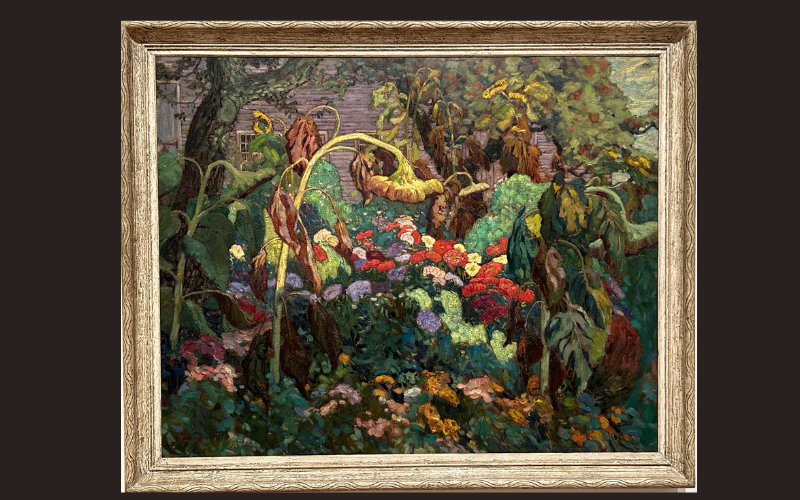
A. Y. Jackson
How much more Canadian can this get–red maple leaves in front of a rushing river. The painting is even called “The Red Maple” and is based on a sketch from nature produced along the Oxtongue River in Algonquin Park.
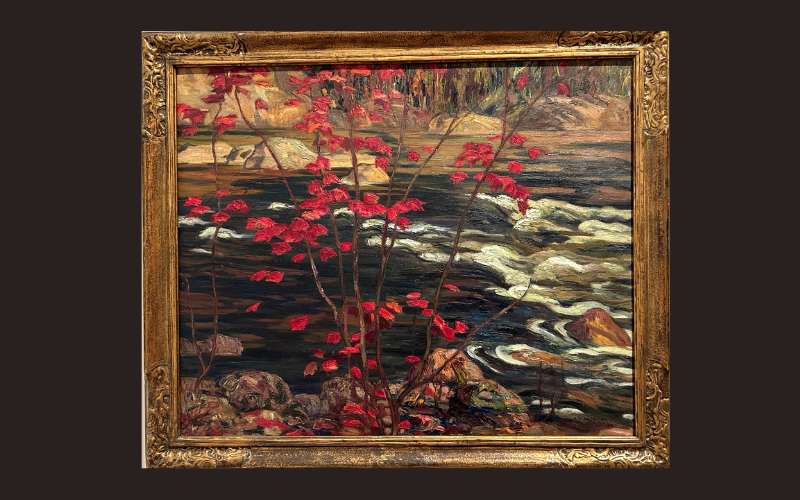
Arthur Lismer
Is this iconically Ontario or what? To me, this depiction of Georgian Bay in a storm really captures the swirling clouds and choppy waves of the Great Lakes region. It really couldn’t be anywhere else in Canada!
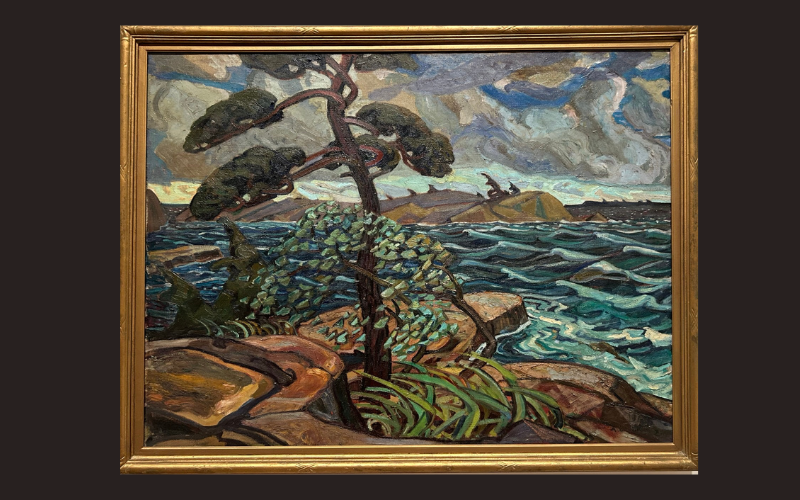
F. H. Varley
Same with this piece, which also depicts a storm on Georgian Bay. The Group of Seven artists are credited with being quintessentially Canadian, but really, they are at heart Ontarians. As someone born and bred in British Columbia, I don’t particularly resonate with the Ontario landscape. However, I can appreciate it and also how its depiction by the Group of Seven artists showcased a corner of Canada’s vast landscape to the world.
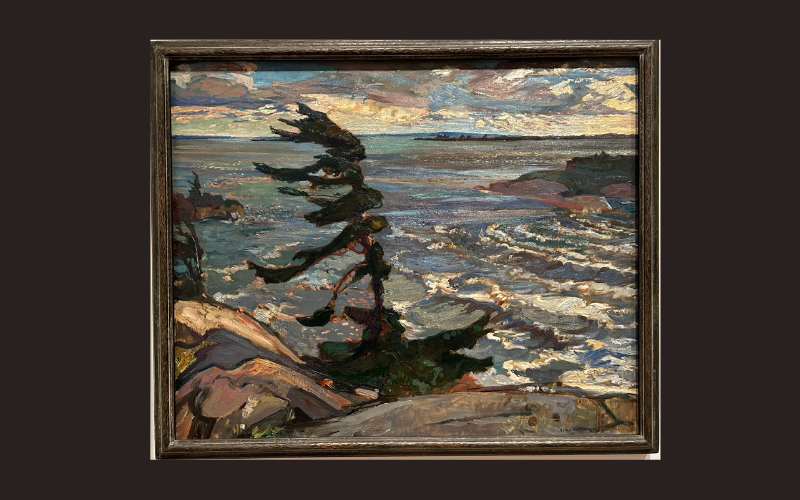
Franklin Carmichael
Carmichael is my second favorite Group of Seven artist after Lawren Harris; I even have a print of one of his paintings in my office. See how he smashes together landscape elements to produce a visual earthquake for the viewer. You can feel the seismic energy of the rain, the snow, and the wind in his paintings.
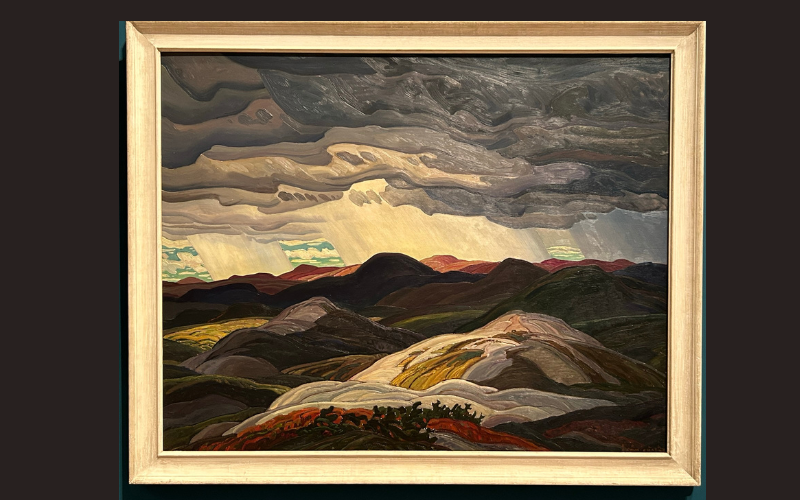
Tom Thomson
Although he was not formally considered a member of the Group of Seven, the paintings by Tom Thomson are pretty much synonymous with most people’s idea of Group of Seven landscapes. The National Gallery includes a large display of several dozen of Thomson’s small canvases. This video gives a good idea of the variety and quality of these exquisite gems.
Emily Carr
The other most famous artist who was not part of the Group of Seven, but definitely associated with them, is BC’s own Emily Carr. The National Gallery includes several of her pieces. Most depict the brooding West Coast rainforest–a landscape I definitely resonate with since it’s the one I see outside my window as I write this! A massive cedar tree is directly in my line of sight. It doesn’t take much imagination to see it as Carr did–a swirling, living mass of green energy thrusting skyward. Here are two of her pieces that I particularly liked.
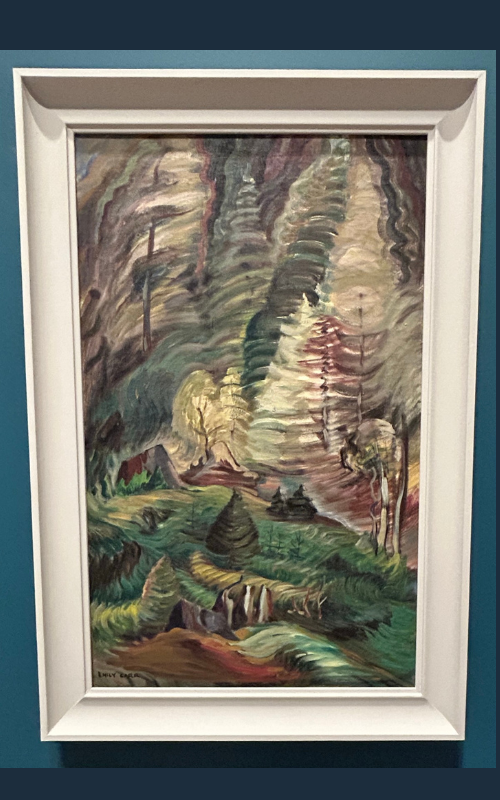
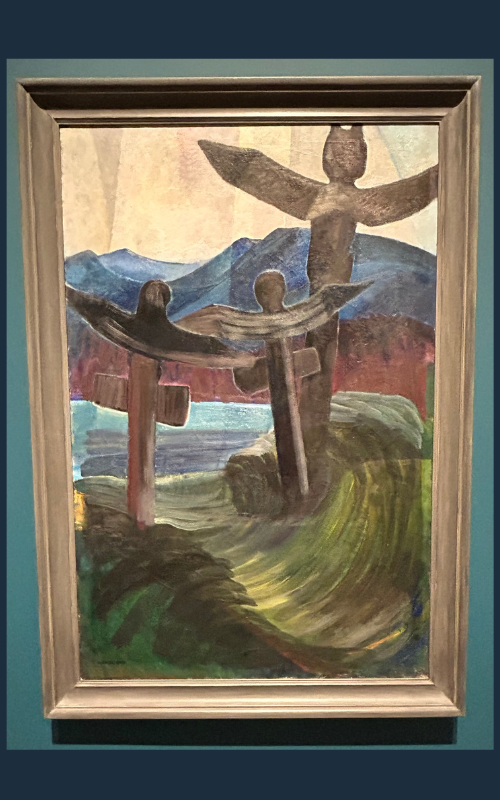
Indigenous Art
The National Gallery does a good job of including several fabulous pieces of indigenous art in the collection of paintings by artists of mostly European descent. Here are two pieces I admired.
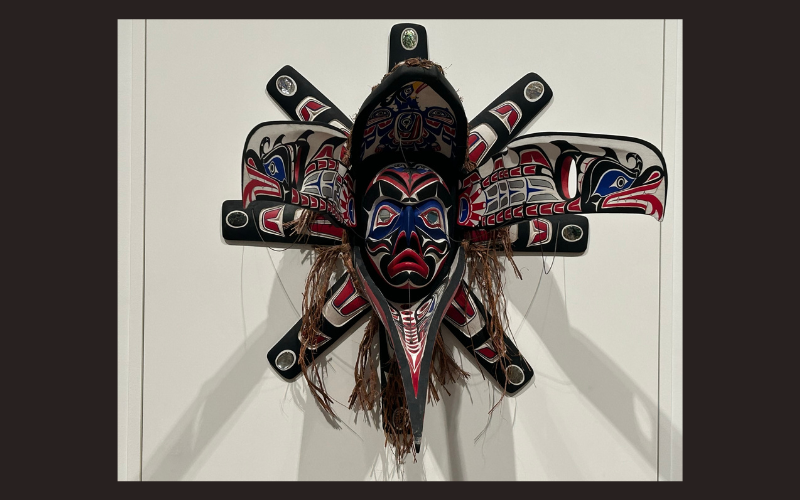
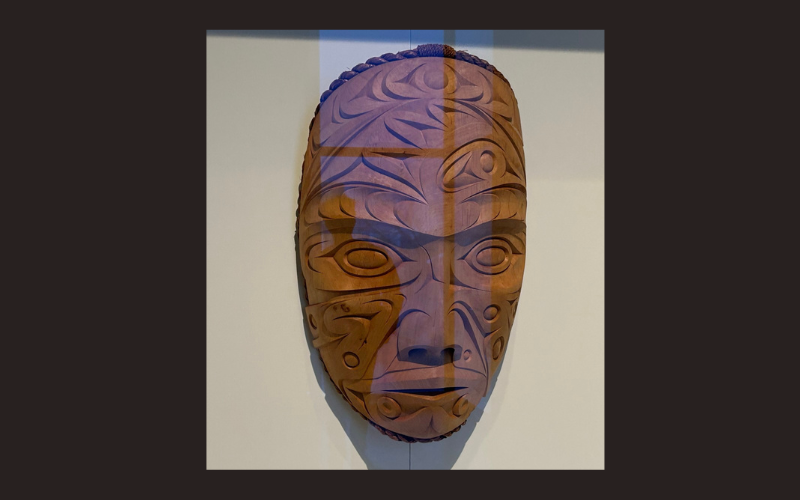
Other Notable Pieces
While the stars of the show at the National Gallery are the paintings by the Group of Seven and the pieces of indigenous art, I saw some new-to-me pieces worth mentioning.
Here is yet another depiction of Lake Superior (there are many of them in the National Gallery!), which I liked because of the way in which the houses are all jumbled together in front of a massive landscape and because it’s painted by a woman artist I’d never heard of, Yvonne McKague Housser. She painted this piece just a few years after Lawren Harris made the Lake Superior region famous.
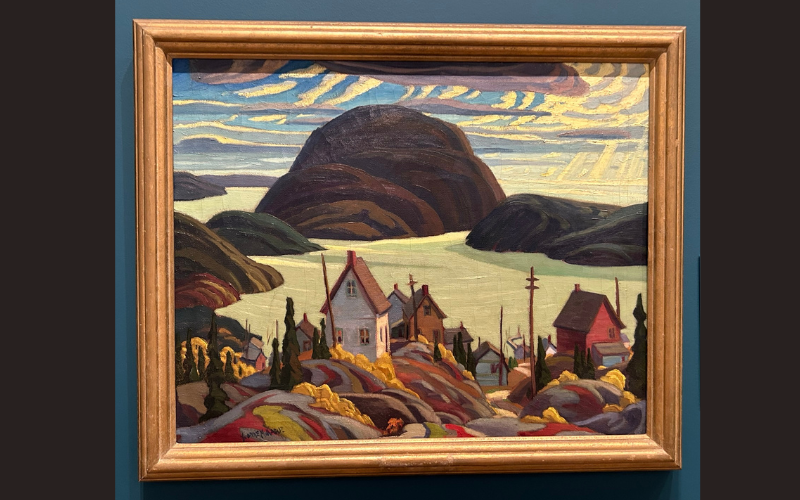
This piece from the 19th century of loggers clear-cutting the area where I now live resonated because of the interesting way in which the artist depicted the figures next to the logs. The painting catches one moment during the workday. No one is posing; no one cares about posing. They are just getting on with a brutal day’s labor.
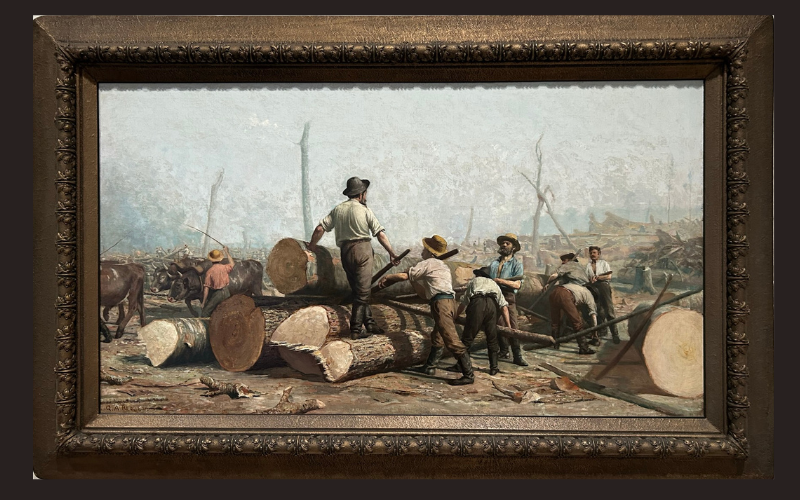
Yes, I’m a sucker for a good still life, and I particularly liked this piece by Quebec artist Joseph Légaré. Apparently, it’s the first still life executed in Canada, although I’m not sure how anyone can be 100% sure of that! Anyway, it’s a nice painting.
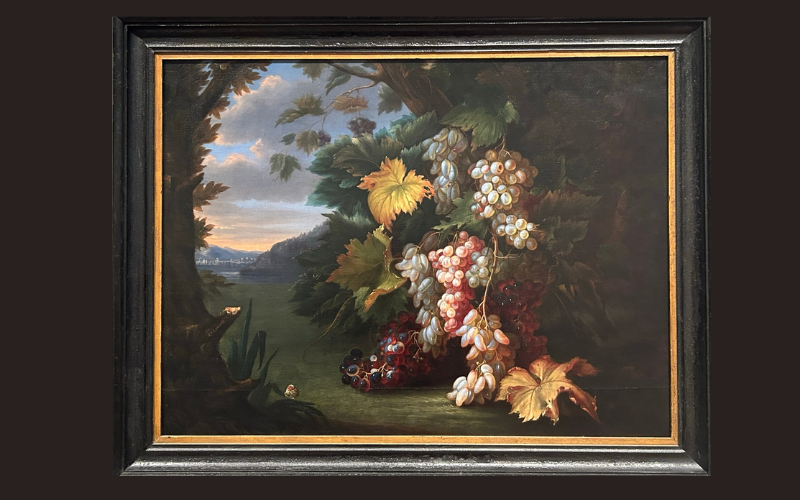
And Finally – A Shout-Out to the Gift Shop
I love a good museum gift shop and the one at the National Gallery of Canada is right up there in my top ten all-time favorite museum gift shops. There’s a wonderful selection of quality gift items, many with indigenous designs and the assurance that the money actually goes to the artists. Hopefully, that is true because in my last two trips to the National Gallery (February 2023 and December 2021), I purchased several indigenously-designed items there.
Definitely check it out after you’ve toured the National Gallery. I dare you to leave without buying something!
Practical Information
The National Gallery of Canada is located at 380 Sussex Drive in Ottawa (see #1 on the map at the beginning of this post). It is open Tuesday to Sunday from 10 am to 5 pm (8 pm on Thursday), and closed on Monday. Adults cost $20; seniors $18; and 24 and under & students $10. Children under 11 are free.
Conclusion
The National Gallery of Canada’s permanent collection is stunning and extremely safe–some would say conservative. The focus is on the crowd-pleasing paintings by the Group of Seven (and hey, I was pleased), but there are very few paintings by more recent Canadian artists. Still, it’s a great collection and worth a few hours of your time when visiting Ottawa, a city with its fair share of excellent museums.
Have you visited the National Gallery of Canada? What are some of your favorites? Share in the comments below.
